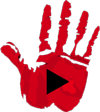
TikTok Genocide

Smoke billows over house struck by IDF at night
Original Social Media Post
"عاجل| تغطية صحفية: ارتقاء فلسطينيين وإصابات في قصف الاحتلال منزلاً جنوب غرب مخيم النصيرات وسط قطاع غزة" - Source
Archivist Notes On This Video
Translation of caption: Two Palestinians killed and others injured in the occupation's bombing of a house southwest of the Nuseirat camp in the central Gaza Strip
Event Notes
Al-Durrah family massacre on anniversary - NuseiratAfter 11pm on September 30th, 2024, two near-simultaneous Israeli airstrikes targeted two houses in Nuseirat, central Gaza, belonging to the Abu Shamis and Abu Ataya families.
Just before [11:15pm] an Israeli air strike on Nuseirat was first reported. This strike targeted the Abu Shamis family home near Al-Hasayna School, west of Al-Nuseirat camp.
While the first reports of casualties from the Abu Shamis family were just coming in, at [11:30pm] a second Israeli air strike targeted the home of the Abu Ataya family in Camp 1 of Nuseirat.
14 people were confirmed to have been killed in total in both Israeli bombardments. Most of the victims are from Al-Durrah family. The same family whose child Muhammad, was shot dead in the arms of his father, Jamal, on September 30, 2000. The Israeli massacre of the al-Durrah family happened precisely on the 24th anniversary of the murder.
The father, Jamal, lost some relatives earlier in the current genocide, and survived this new massacre of his family again, deepening his loss:
- Oct 15: his two brothers, his sister-in-law, and his niece were killed in central Gaza
- Jan 4: a number of relatives (around 4-5 body bags were seen)
- Jan 19: his other son Ahmad was killed, in Bureij
Paramedic Abdulaziz Mohammed posted photos of the interior of his ambulance stained with trails of blood.*
Names of the martyrs (identified):
at Abu Shamis famile house
- Ni’ma Abbas Mustafa Al-Durrah (Khalaf) (60 years old)
- Rami Jumua Salem Al-Durrah (45 years old)
- Mahmoud Jumua Salem Al-Durrah (27 years old)
- Safaa Fayez Al-Durrah (Abu Daya) (40 years old)
- Sally Rami Jumua Al-Durrah (16 years old)
- Najwa Rami Jumua Al-Durrah (4 years old)
- Mohammed Mahmoud Jumua Al-Durrah (2 years old)
- Hadeel Jamal Mustafa Ayash (26 years old)
- Jumua Salem Abdul Qader Al-Durrah (79 years old)
- Haya Rami Jumua Al-Durrah (21 years old)
- Mustafa Rami Jumua Al-Durrah (19 years old)
at Abu Shamis famile house
- Ohood Alyan Bukhait (29 years old)
- Aya Alyan Bukhait (23 years old)
Massacre dedicated to the murder, 20 years ago, of a Palestinian child:
This event appears to be an Israeli “celebration” or “dedication” of the assassination, 24 years ago, of the child Muhammed Durrah, emblematic martyr of the second Intifada.
On September 30, 2000, 12-year-old Palestinian boy Muhammad al-Durrah was fatally shot by Israeli forces in Gaza as his father, Jamal al-Durrah, attempted to shield him from gunfire in the crossfire at the Netzarim junction in Gaza.
Talal Hassan Abu Rahma, a Palestinian cameraman for France 2, along with journalists from Reuters, AP, and NHK, were present at the scene, filming the day's protests and later the gunfire exchange for French TV channel France 2. This occurred two days after Israeli politician Ariel Sharon's visit to the Temple Mount/Al-Aqsa Mosque compound, which sparked widespread protests and strikes in the Palestinian territories. The day after the incident, Abu Rahma visited Jamal al-Durrah, Muhammad's father, in the hospital. Jamal was in critical condition, with many bullets lodged in his body, according to the doctors.
The footage, showing Jamal trying to protect his son, became an iconic and heartbreaking symbol of the Second Intifada, gaining international attention. It was broadcast worldwide, causing widespread outrage. Talal Abu Rahma, the cameraman who captured the iconic footage of Muhammad al-Durrah, received numerous awards and honors for the video, from countries such as Dubai, Qatar, the U.S., France, and twice in London. He expressed disbelief at the accusations that the video had been staged.
Israel's Response: The Israeli government and military denied responsibility for the shooting, questioning the authenticity of the video and denying that Israeli soldiers were involved. After the shooting, the Israeli army proceeded to destroy much of the physical evidence, including razing the wall behind Muhammad al-Durrah. The IDF justified this by arguing it needed to remove hiding places for Palestinian gunmen.
In 2012, Israeli Prime Minister Benjamin Netanyahu requested a new inquiry into the Muhammad al-Durrah incident, led by Yossi Kuperwasser, director-general of the Strategic Affairs Ministry. The resulting 2013 Kuperwasser report questioned the original claims about the boy's death. The report concluded that Muhammad al-Durrah and his father, Jamal, had not been hit by Israeli Defense Forces (IDF) fire and suggested they may not have been shot at all. It also claimed the boy seen in France 2’s footage was alive at the end of the video. Jamal al-Durrah rejected the findings, stating that if his son were still alive, Israel should return him. He even offered to exhume his son’s grave for DNA analysis to disprove the report. The report was controversial and criticized by Reporters Without Borders and Israeli journalist Barak Ravid.
Legal Battle: In 2013, a French court ruled in favor of France 2 and Talal Abu Rahma in a defamation case against French media commentator Philippe Karsenty, who had accused them of staging the footage. Karsenty was fined 7,000 euros.
Distribution of the Footage: Some questioned whether the footage was sold for profit, but France 2 made the decision to distribute the video for free. Both the channel and Abu Rahma agreed not to profit from the tragedy, with France 2 stating, “We will not make money from the blood of children.”
The details for each video come from social media. None of it has been verified.